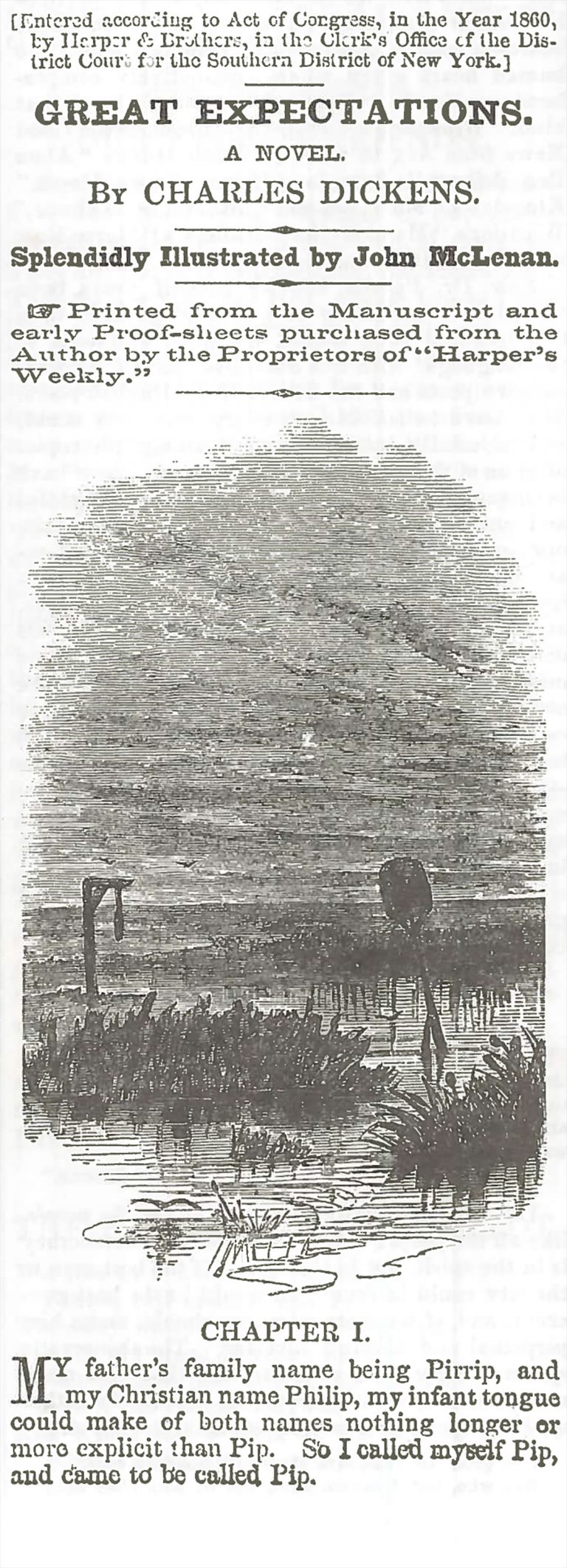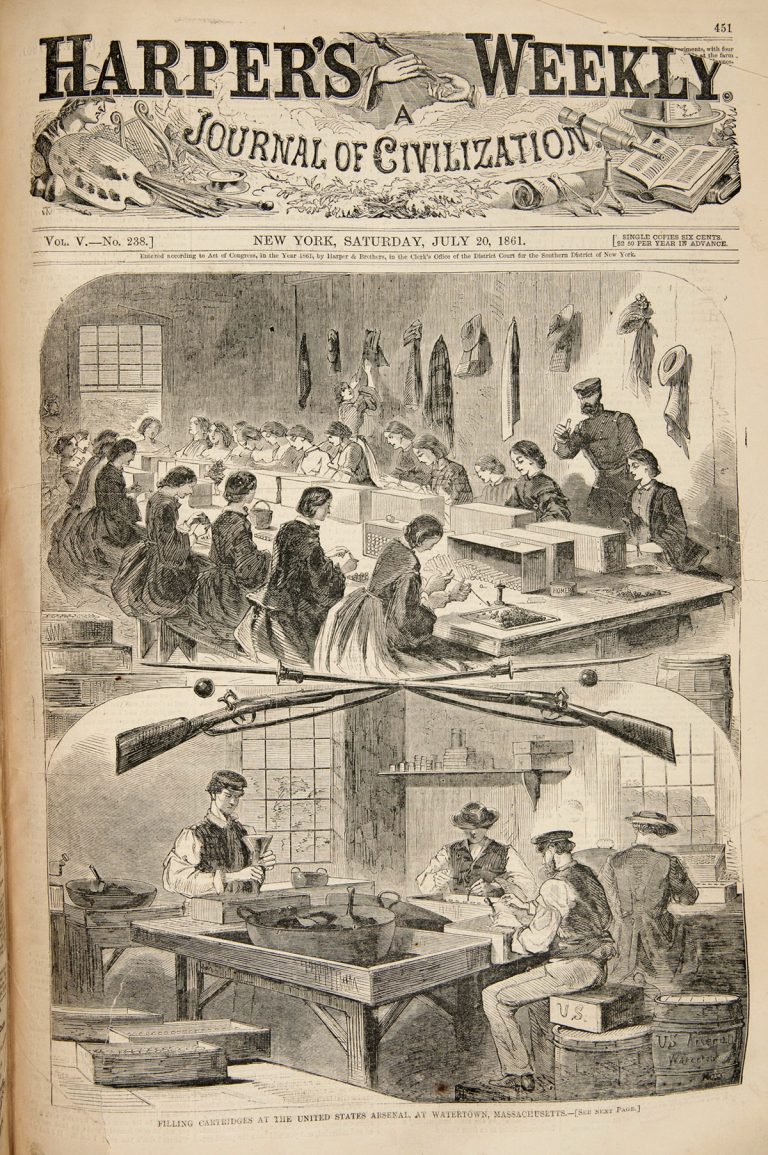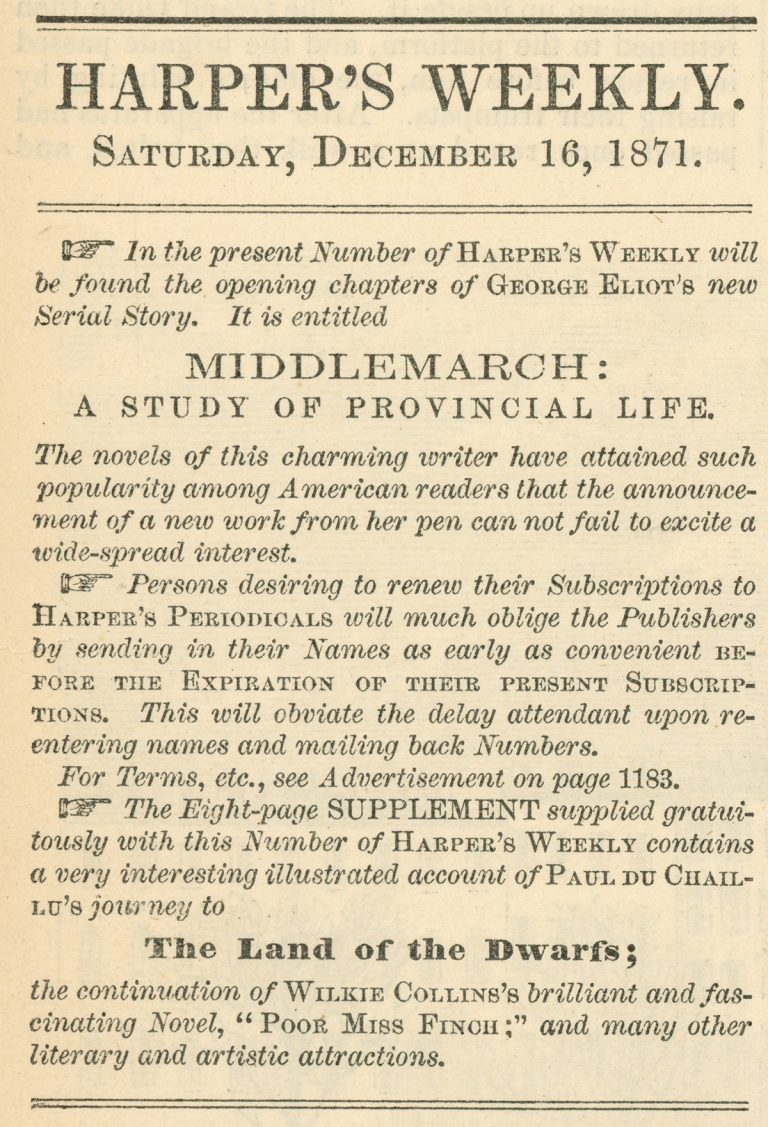Explore significant moments in HarperCollins history
An ad promoting all of the Harper periodicals: Harper’s Weekly, Harper’s New Monthly, and Harper’s Bazaar.
Periodicals: Harper’s Weekly, Harper’s New Monthly and Harper’s Bazaar
The Harper brothers consistently sought ways to reach more readers with less expensive publications, and in 1850 they revolutionized the concept of the modern literary magazine with Harper’s New Monthly Magazine.
Serialization was an effective format for publishers to take chances on new authors and experimental writing. Harper’s New Monthly Magazine printed a chapter of Herman Melville’s Moby-Dick in October 1851 to promote the forthcoming novel, and Harper periodicals were first to serialize Wilkie Collins’s Armadale (1864), Charles Dickens’s Our Mutual Friend (1865), Anthony Trollope’s Sir Harry Hotspur of Humblethwaite (1871), Henry James’s Washington Square (1880), and Mark Twain’s Joan of Arc (1895).
The first issue of Harper’s Weekly launched on January 3, 1857. The aim of this publication was to be a high-class illustrated weekly intended for family reading. It was the creation of Fletcher Harper, and he devoted all of his energies to it. Like the Harper’s New Monthly, the weekly was a success from the start. Although it started out as nonpolitical, it became a “national power” with the outbreak of the Civil War and its subsequent coverage.
Harper’s Bazaar, first published by the brothers in November 1867, has been called America’s first fashion magazine. Thomas Hardy’s Tess of the D’Urbervilles was serialized in Harper’s Bazaar in 1891, and Winslow Homer provided many illustrations in the early years. Harper & Brothers sold the magazine in 1913, but it continues to this day much in the mold established by founding editor Mary L. Booth.





